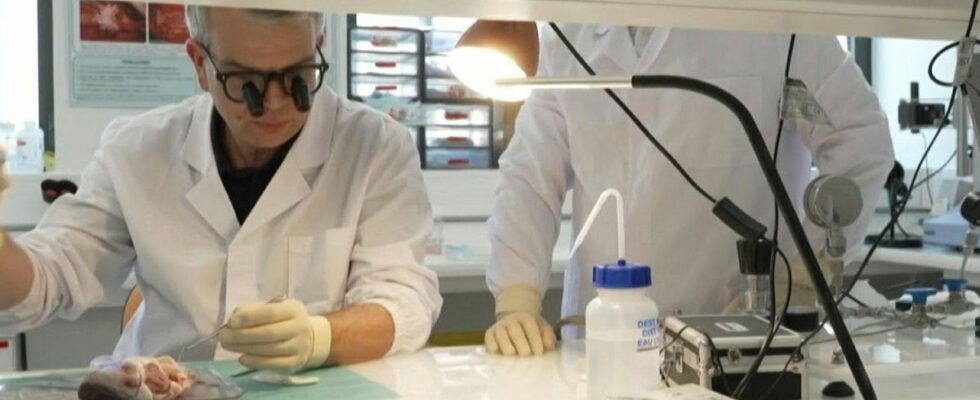Published on
Updated
Reading 2 min.
In Bordeaux, researchers have succeeded in “weaving” prostheses from human collagen threads which could eventually replace damaged blood vessels, offering hope for the treatment of many diseases.
On a weaving machine, white threads, similar to those that make up the textile of a garment, are wound around a bobbin. Once assembled, they will take the form of a small transparent tube.
We are not in a sewing workshop, but within the “Tissue Bioengineering” unit (Inserm/University of Bordeaux).
The threads are “derived from human cells,” explains Nicolas L’Heureux, an Inserm researcher who heads the “BioTis” laboratory, a leader in France in the field of bone and vascular tissue engineering.
To create them, the researchers cultivated human cells rich in collagen in the laboratory.
Collagen is a substance naturally produced by fibroblasts, cells found in abundance in the human body that help support many tissues and organs.
The researchers managed to obtain thin sheets of this ultra-resistant material, from which they cut the threads that they will be able to “weave”, “knit”, “braid”…
Sustainable alternative
Prostheses made from these completely biological threads will eventually be used to replace damaged blood vessels in humans, they hope.
“Currently, in surgery, plastic or animal-derived materials are implanted“, recalls Nicolas L’Heureux. “Our challenge is to offer a sustainable alternative that is extremely well tolerated by all patients.” he describes.
In fact, collagen does not vary from one individual to another, so these vessels should not be considered by the body as foreign bodies to be rejected.
The main patients affected could be those with kidney failure. Treated by haemodialysis, they have their veins and arteries punctured several times a week, so much so that they end up being damaged and have to be replaced.
The new generation of biomaterials designed by scientists from the BioTis laboratory proves to be “extremely promising“, rejoices François Roubertie, surgeon in the congenital cardiovascular diseases department of the Bordeaux University Hospital.
On a sheep’s heart, he demonstrates a suture using these threads: “We have already put a sheep carotid artery together with this biological thread“, he assures.
The researchers also hope that their collagen-derived material will be used to make valves to treat a congenital pediatric disease called “tetralogy of Fallot.” Responsible for heart defects, it affects 1% of children at birth and must be treated surgically.
Organic nets
“Today, the materials used during operations are synthetic, which leads to chronic inflammation.“, explains Fabien Kawecki, Inserm researcher at the BioTis laboratory. They are also “not adapted to the growth of children, who have to be re-operated on a few years later”.
For the moment, biological valves created in the laboratory, and intended to replace current materials, have shown good results on animal models. These will need to be confirmed over time before considering human trials, within five to ten years.
The team is also interested in treating prolapse – commonly called “organ prolapse” – which affects one in three women. The idea: to weave “biological nets” from human tissue created in the laboratory, which would be used to “lift” and hold the organs in place.
A few years ago, the use of synthetic nets led to multiple complications around the world and was the cause of health scandals. These nets were banned in many countries, including France.
So much so that “today, doctors no longer have many options to offer to patients,” notes Diane Potart, Inserm researcher at the BioTis laboratory.
Scientists are therefore placing a lot of hope in their biological nets, which this time would be “knitted”. “We think that they would be the ideal candidate for treating organ prolapse but also urinary incontinence”, says Diane Potart.
